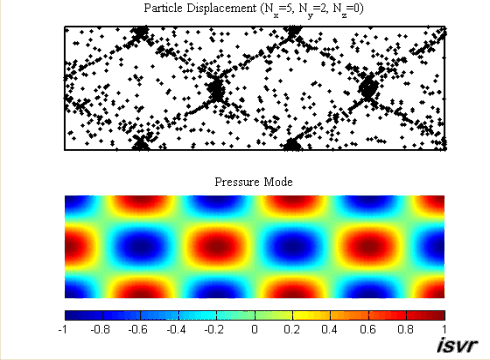Producing bass below the Schroeder frequency in small rooms
Small rooms are all different from one another. With time we adjust to it, live and work there & enjoy the space as well. Just like that our ears have the tendency to adapt to to what we hear over time thus making it difficult to identify. Certain amount of bass problems can be adapted but the extreme the problem more difficult it is to ignore, unless you have a critical listening ear.
According to old research about 30% of sound quality depends upon the low frequency performance but in the modern day love for BASS, you might as well re-research. Even though, it’s ALMOST IMPOSSIBLE FOR EVEYRONE TO HEAR THE SAME BASS IN DIFFERENT SEATS AT THE SAME TIME WITHOUT ANY TECHNICAL ADJUSTMENTS & PROPER AMOUNT OF SUB(DEEP LOW) FREQUENCY POWER.
Why you should know about resonances
It basically means for every material, shape, element, object or anything with a fixed volume, due to it’s very nature of how it’s surface and inner particle bonds coexist, for that particular object there exists one frequency for which the particle velocity of the object will be maximum compared to any other frequency it produces or resonates upon.
Similarly every small room due to it’s own nature of it’s shape and volume has not just one but a few resonant frequencies at which the particle velocity in that room in specific spots will be more & pile up or create destructive interference.
The geometry and volume of the room is the biggest reason of the sound field being non uniform and acoustically unidentical resulting in attenuation or amplification of specific frequencies in the room.
A room’s resonant frequencies can be roughly calculated from it’s dimensions(Length, Width, Height).
So at all times sound travelling between 2 surfaces back and forth will result in resonant frequencies if the impulse doesn’t die out causing such frequencies to pile up.
Spectral & Time domain real world impacts of room resonances
Standing wave phenomena can also occur in a room at specific frequencies called the resonance frequencies of the room. These depend on the dimension and shape of the room. At resonance, the acoustic response of the room will be enhanced. As shown by these animations, pressure maxima (in red) and pressure minima (in blue) will then be regularly distributed within the room and their pattern will differ for each resonance frequency. Again the particle distribution has been exaggerated. Notice once more that at the walls, where there is no particle displacement, the pressure is at a maximum.
Standing waves, room modes, room resonances, eigentones or eigenfrequencies, this is what those resonances result in and basically have 2 kinds of impacts that you should be familiar with.
Spectral variations resulting in selective accentuated frequencies changing the tonal structure or timbre of the reproduced signal & Time domain effects resulting in some ringing at specific frequencies.
The bigger problem though, room modes are particularly harder to identify above 200 Hz or Schroeder Frequency, & at sub frequencies the the behavior of these resonances is essentially minimum phase thus high resolution steady state frequency response measurements are required to compute transient response even after the perfect BIM sound model predictions.
Room resonances or room modes are the result of sound propagating between room wall surfaces, a perfect constructive interference of sound waves bouncing between and among two or more room boundaries. Sure some people will tell you you can reduce that to some extent by making the walls non parallels but it’s still not getting rid of the tangential and oblique modes which in turn affect the higher spectrum of listening range for the most part. In other words some of the bass notes in the track will either be not at all audible at specific locations in the room or heard with some ringing effect and structural vibrations can be felt at that instant. It is being stated about the bass notes as the change is most easily perceptible without any controlled environment listening. There’s a quality factor associated with resonance peaks & dips stated as Q. High -Q have low loss & effects the spectral domain with a narrow footprint in the frequency domain as well as prolonged ringing in the time domain making successive notes merge into one another. Low Q exhibits a wide footprint in the frequency domain but a much shorter well damped ringing
In simple terms, all of these problems result in a space that is not acoustically identical & some frequencies either too boosted or too attenuated at different positions in the room. Without proper placement and sound field management it’s impossible to provide uniform listening experience let alone for a single listener.
We need to know what to do with these room modes.
Most rooms in any home around the world for the most part are rectangular in nature, one side large than the other. Rectangular rooms are easy to predict & thus apply a correction for compared to non rectangular rooms or joined rooms. Frequency at which the boundary separation is multiple of half wavelength, standing waves or room resonances will occur called axial modes existing along each of the principal axes of the room- length, width & height. Mostly at 1/2 wavelength of any specific frequency roughly below 250 Hz there will be problems at different spots in the room.
This surely doesn’t mean you have corrected all the acoustical eigen mode problems, still axial modes can be corrected to a measure of 60-70 percent just by placing your speakers in the right places and taking care of all the corners in the room.


